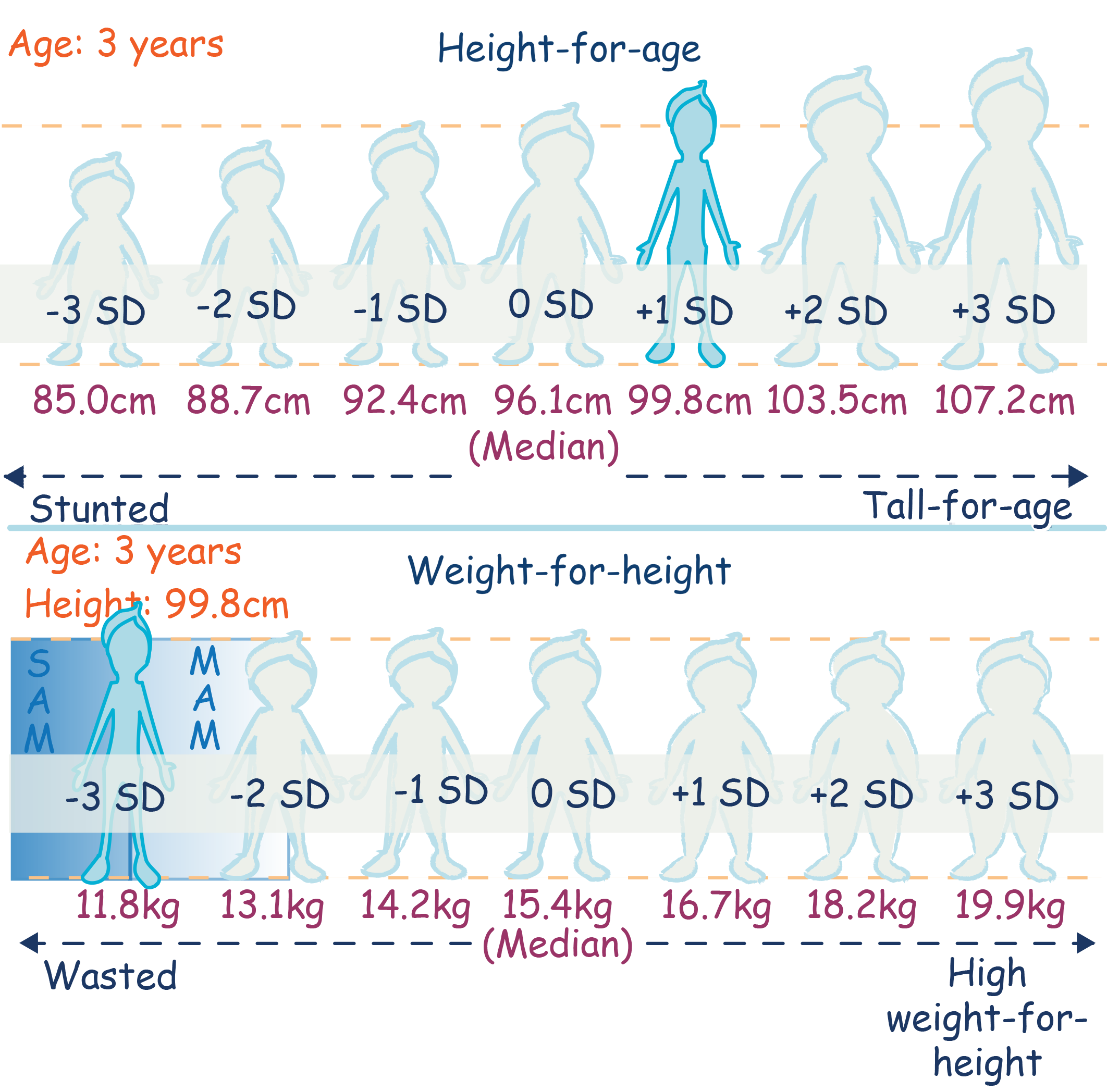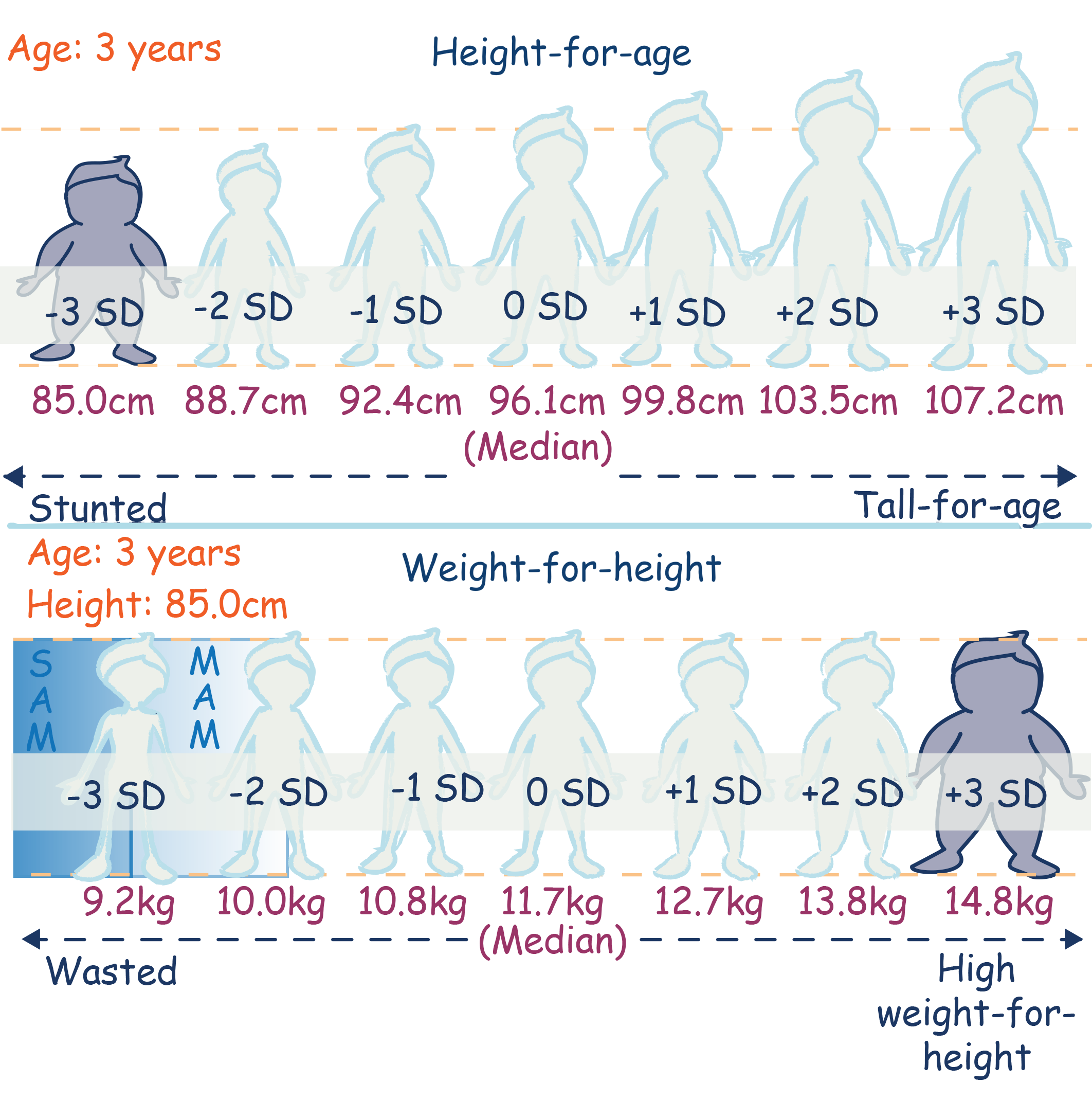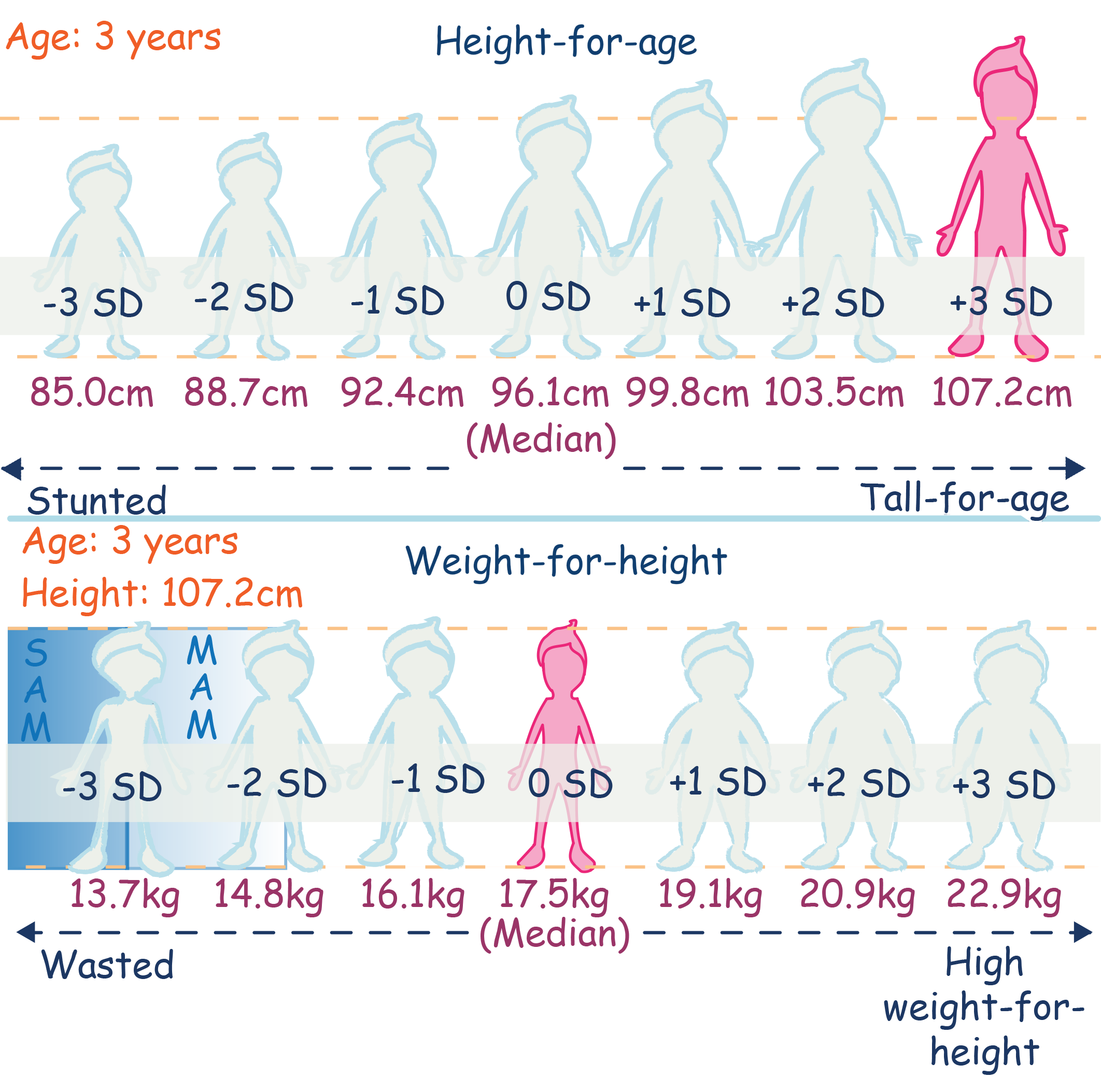Page 3 of 10
Indices and clinical signs for assessing malnutrition and when to use them
Weight-for-age
This index indicates body weight at a given age. The child’s exact age must
be known. In comparison to that of an average healthy child of the same
age, it can identify underweight, but cannot differentiate between wasting
and stunting. This index is commonly used in paediatric clinics, but
it may not be feasible, for example, for unaccompanied children in refugee
situations.
If a child has a low weight-for-age, you will need to check the child’s height-for-age
and weight-for-height to see if the child is stunted and/or wasted. On
the right, there are three children highlighted. Click each child to see
their height-for-age and weight-for-height. You will see that the child
-2SD weight-for-age is of normal height but is wasted. The child with
median weight-for-age (0 SD) is stunted and overweight. The child +2
SD weight-for-age is tall but of normal weight-for-height (i.e. is not
wasted or overweight). Children with oedema have increased body weight
due to fluid retention, and their true weight is masked. Weight-for-age
and weight-for-height are overestimated in children with oedema. Children
with oedema are considered to be severely malnourished regardless of
their weight-for-age or weight-for-height SD score.
<< Back
















